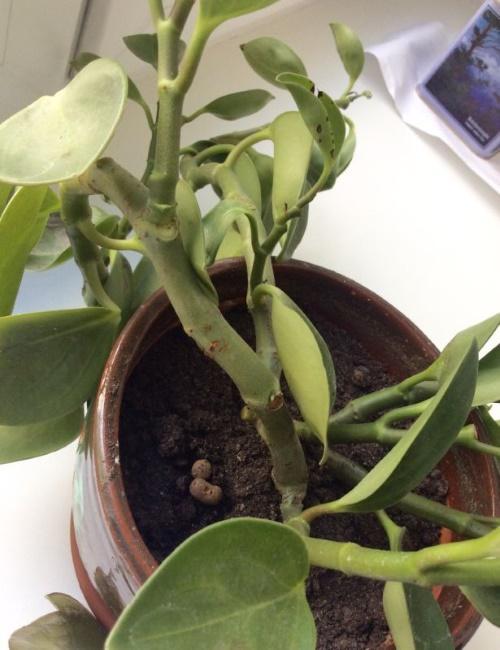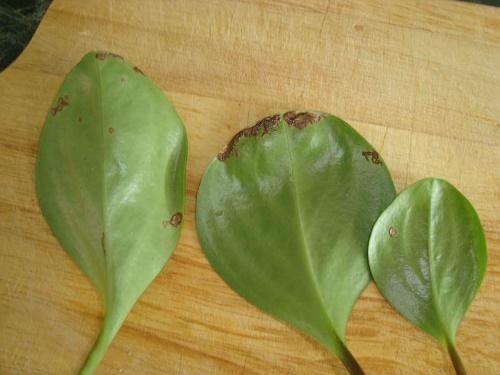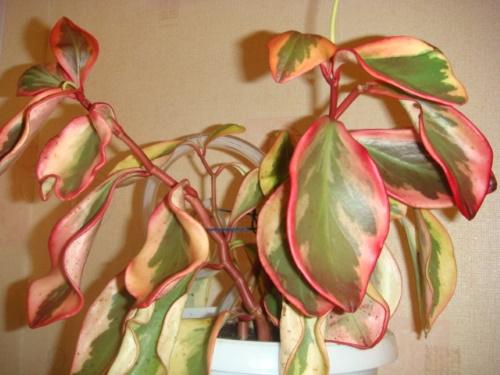Why peperomia leaves fall: common causes of the problem
 The main advantage of peperomia, for the sake of which it, in fact, is turned on, is the colorful leaves of various colors. Juicy, fleshy, they not only decorate the bush, but also are one of the sources of nutrition for the plant. Therefore, when the bush begins to lose them, it is worth thinking about why the leaves fall off in peperomia. When watering, part of the water goes to the roots, and the leaf plates absorb the remaining liquid and gradually give it to the bushes. Despite the moisture-loving nature, it is important to maintain a balance when watering a flower, otherwise troubles are inevitable. In addition, by dropping leaves, this flower also reacts to changes in conditions of detention. Like other indoor plants, foliage is an indicator of the health of peperomia. So, what can trigger her loss?
The main advantage of peperomia, for the sake of which it, in fact, is turned on, is the colorful leaves of various colors. Juicy, fleshy, they not only decorate the bush, but also are one of the sources of nutrition for the plant. Therefore, when the bush begins to lose them, it is worth thinking about why the leaves fall off in peperomia. When watering, part of the water goes to the roots, and the leaf plates absorb the remaining liquid and gradually give it to the bushes. Despite the moisture-loving nature, it is important to maintain a balance when watering a flower, otherwise troubles are inevitable. In addition, by dropping leaves, this flower also reacts to changes in conditions of detention. Like other indoor plants, foliage is an indicator of the health of peperomia. So, what can trigger her loss?
Why do peperomia leaves fall

- excess or lack of lighting;
- lack of moisture;
- lowering the temperature.
Peperomia has no dormant period... It develops all year round, so over time it sheds old leaves to feed the young. If the lower leaves gradually die off one by one, there is no reason for concern. This is the natural aging of the bush. But in the case when a massive leaf fall begins, while in a short time, then there is a problem.
Sun and peperomia
 Lighting requirements depend on the varietal characteristics of the flower, but in general he loves the sun. Variegated peperomia species need a more illuminated place. Varieties with a uniform color of leaves can grow in light partial shade.
Lighting requirements depend on the varietal characteristics of the flower, but in general he loves the sun. Variegated peperomia species need a more illuminated place. Varieties with a uniform color of leaves can grow in light partial shade.
However, regardless of the type of culture, direct sunlight is contraindicated for it. South windows are not suitable for peperomia, especially in summer. There, the leaf plates begin to wrinkle, wither and fall off. If this happens, you should rearrange the flowerpot on the east or west windowsill.
In winter, the opposite problem can be. Short daylight hours, clouds obscuring the sun, lead to the fact that the flower begins to lack light. The petioles stretch out and become frail, and the bush may shed its leaves. Then peperomia will need additional lighting.
Improper watering - as the cause of leaf fall
 Succulent foliage needs sufficient moisture. If it is not enough, peperomia becomes lethargic, and foliage crumbles. In the spring-summer period, the bush should be watered often, as the topsoil dries out. An overdried plant can be restored by often wetting the soil.
Succulent foliage needs sufficient moisture. If it is not enough, peperomia becomes lethargic, and foliage crumbles. In the spring-summer period, the bush should be watered often, as the topsoil dries out. An overdried plant can be restored by often wetting the soil.
In winter, especially with a cool content, the watering regime must be significantly reduced. Otherwise, the peperomia will start to rot. First, dark spots will appear on the leaf plate, the petioles will darken and the foliage will disappear. The roots will also rot, so you cannot fill it. The cooler it is in the room, the less often you should drink peperomia.
Violation of the comfortable temperature regime
 Peperomia can grow all year round at the same temperature, which is 18-22 ° C for it. With the arrival of winter, it becomes difficult to maintain such a range, especially if the heating is not individual. It is important at this time not to allow the bush to overcool - then the loss of leaves cannot be avoided. It is also worth taking care that the "legs" of the peperomia are also warm, placing foam under the flowerpot.
Peperomia can grow all year round at the same temperature, which is 18-22 ° C for it. With the arrival of winter, it becomes difficult to maintain such a range, especially if the heating is not individual. It is important at this time not to allow the bush to overcool - then the loss of leaves cannot be avoided. It is also worth taking care that the "legs" of the peperomia are also warm, placing foam under the flowerpot.